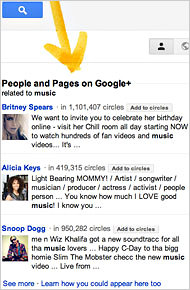It was the second case of a severe scolding of the spy agency by the Foreign Intelligence Surveillance Court to come to light since the disclosure of thousands of N.S.A. documents by Edward J. Snowden, a former contractor, began this summer.
The newly disclosed violations involved the N.S.A. program that has drawn perhaps the sharpest criticism from members of Congress and civil libertarians: the collection and storage for five years of information on virtually every phone call made in the United States. The agency uses orders from the intelligence court to compel phone companies to turn over records of numbers called and the time and duration of each call — the “metadata,” not the actual content of the calls.
Since Mr. Snowden disclosed the program, the agency has said that while it gathers data on billions of calls, it makes only a few hundred queries in the database each year, when it has “reasonable, articulable suspicion” that a telephone number is connected to terrorism.
But the new documents show that the agency also compares each day’s phone call data as it arrives with an “alert list” of thousands of domestic and foreign phone numbers that it has identified as possibly linked to terrorism.
The agency told the court that all the numbers on the alert list had met the legal standard of suspicion, but that was false. In fact, only about 10 percent of 17,800 phone numbers on the alert list in 2009 had met that test, a senior intelligence official said.
In a sharply worded March 2009 ruling, Judge Reggie B. Walton described the N.S.A.’s failure to comply with rules set by the intelligence court, set limits on how it could use the data it had gathered, and accused the agency of repeatedly misinforming the judges.
“The government has compounded its noncompliance with the court’s orders by repeatedly submitting inaccurate descriptions of the alert list process” to the court, Judge Walton wrote. “It has finally come to light that the F.I.S.C.’s authorizations of this vast collection program have been premised on a flawed depiction of how the N.S.A. uses” the phone call data.
The senior American intelligence official, briefing reporters before the documents’ release, admitted the sting of the court’s reprimand but said the problems came in a complex, highly technical program and were unintentional.
“There was nobody at N.S.A. who really had a full understanding of how the program was operating at the time,” said the official, who spoke on the condition of anonymity. The official noted that the agency itself discovered the problem, reported it to the court and to Congress, and worked out new procedures that the court approved.
In making public 14 documents on the Web site of the director of national intelligence, James R. Clapper Jr., the intelligence officials were acting in response to Freedom of Information Act lawsuits and a call from President Obama for greater transparency about intelligence programs. The lawsuits were filed by two advocacy groups, the Electronic Frontier Foundation and the American Civil Liberties Union.
“The documents only begin to uncover the abuses of the huge databases of information the N.S.A. has of innocent Americans’ calling records,” said Mark M. Jaycox, a policy analyst at the Electronic Frontier Foundation. He said the agency’s explanation — that none of its workers fully understood the phone metadata program — showed “how much of a rogue agency the N.S.A. has become.”
Judge Walton’s ruling, originally classified as top secret, did not go that far. But he wrote that the privacy safeguards approved by the court “have been so frequently and systematically violated” that they “never functioned effectively.”

Nicole Perlroth contributed reporting.
Article source: http://www.nytimes.com/2013/09/11/us/court-upbraided-nsa-on-its-use-of-call-log-data.html?partner=rss&emc=rss
